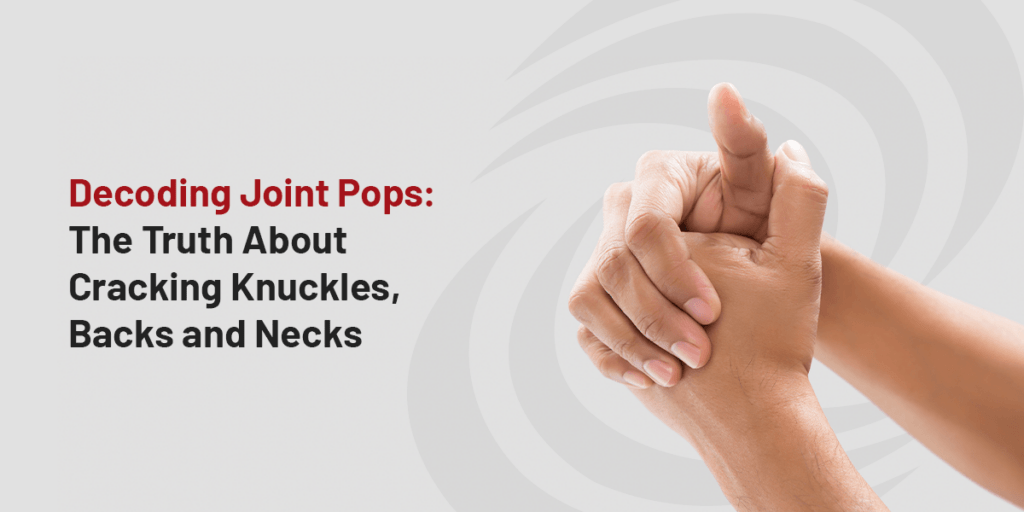

Ever wondered about the science behind that satisfying pop when you crack your knuckles or stretch your back? This article delves into the fascinating world of joint cracking, exploring the mechanisms involved and dispelling common myths surrounding this curious phenomenon.
At the heart of joint cracking lies synovial fluid, a magical lubricant that bathes our joints. Comprising dissolved gases like carbon dioxide and nitrogen, synovial fluid creates an environment where joint movement can produce that signature popping sound. Understanding this fluid’s role is crucial to unraveling the mystery of joint pops.
When you stretch or bend your joints in certain ways, the spaces within the joint capsule expand. The movement decreases the pressure inside the space, creating a low pressure. The gases dissolve in the synovial fluid to form bubbles, known as cavitation. You can guess where this is going.
The cracking sound is believed to be when these gas bubbles rapidly collapse or are formed in the joint. Once the initial popping or cracking is done, a person might find they can’t replicate the same noise for a few days or even a few weeks.
Let’s delve deeper into the mechanics of cracking knuckles. The process begins when you stretch a joint, creating a temporary decrease in pressure within the synovial fluid. This reduction in pressure allows dissolved gases to form bubbles. When these bubbles collapse or implode, you hear the audible crack.
Importantly, numerous studies suggest that contrary to common belief, cracking knuckles doesn’t appear to increase the risk of arthritis. In fact, one study published in the Journal of the American Board of Family Medicine found no significant difference in the prevalence of arthritis between those who cracked their knuckles and those who didn’t. Another study in the journal PLOS ONE even indicated that knuckle cracking might be associated with improved grip strength.
Transitioning to the spine, a complex structure with multiple synovial joints, we find a similar mechanism at play. As you stretch your back or neck, the release of gas bubbles in synovial fluid generates those distinctive cracks. It’s a symphony of movement, gas release and sound, contributing to the sensory experience of a good stretch.
The importance of maintaining spinal flexibility through gentle stretching and exercise cannot be overstated. Incorporating these practices into your routine can enhance joint health and potentially reduce the desire for forceful cracking. Chiropractors and physical therapists can provide guidance on safe and effective stretches to maintain spinal health.
While occasional and gentle joint cracking is generally safe, it’s essential to highlight the potential risks associated with excessive force. Forceful cracking may lead to ligament or joint capsule damage over time. Gentle stretching appears to have no ill-side effect, but others tend to go too far, and the forcefulness leads to joint dislocations and tendon injuries. Here are some of the symptoms to watch out for:
If a non-medical professional constantly cracks your back, they could be causing damage to your spine by doing incorrect manipulation. This could then lead to a bulging or herniated disc, also known as a slipped disc. The improper cracking can slowly wear and tear a disc into moving incorrectly or swelling.
Moderation is key to enjoying the benefits of joint popping without risking potential harm. Additionally, individual variability in joint cracking ability highlights the importance of understanding one’s body and limitations. If you find yourself experiencing persistent discomfort or pain associated with joint cracking, consulting with a healthcare professional is advisable. They can conduct a thorough examination, including imaging if necessary, to ensure there are no underlying issues.
Addressing a persistent myth, scientific evidence suggests no clear link between joint cracking and an increased risk of arthritis. Studies have failed to establish a causative relationship, putting to rest concerns that your penchant for popping joints might lead to long-term joint issues. However, it’s essential to note that if you already have arthritis or other joint conditions, it’s advisable to approach joint cracking with caution and seek guidance from a healthcare professional. They can provide personalized advice based on your specific health needs.
For those who relish the occasional joint crack, moderation is the mantra. Recognizing when cracking becomes a cause for concern is essential, especially if discomfort accompanies the pops. Seeking professional guidance, such as consulting a chiropractor or orthopedic specialist, ensures that you can enjoy the benefits of joint cracking without compromising your joint health.
Incorporating a comprehensive approach to joint care, including regular exercise, a balanced diet and maintaining a healthy weight, contributes to overall joint well-being. Strengthening the muscles around the joints through targeted exercises can also provide additional support and stability.
As we conclude our journey through the world of joint pops, you now possess a deeper understanding of the science behind those satisfying cracks. Whether it’s your knuckles, back or neck, appreciating the mechanisms and dispelling myths is fundamental to maintaining joint health. So, feel free to indulge in the occasional crack, but always prioritize listening to your body and seeking professional advice if needed. A healthy joint is indeed a happy joint!
The Desert Institute for Spine Care is all about your needs first. Spinal issues are often painful and uncomfortable, affecting many aspects of day-to-day life. We want to ensure your comfort as much as possible. Reach out to us and let us know what symptoms you are experiencing. We want to listen to your story and get to the bottom of your concerns. Schedule an appointment with our online form today.